CORSAIR XENEON FLEX OLED
This 45-inch flexible OLED screen is sorta stunning, but painfully pricey and fundamentally flawed.
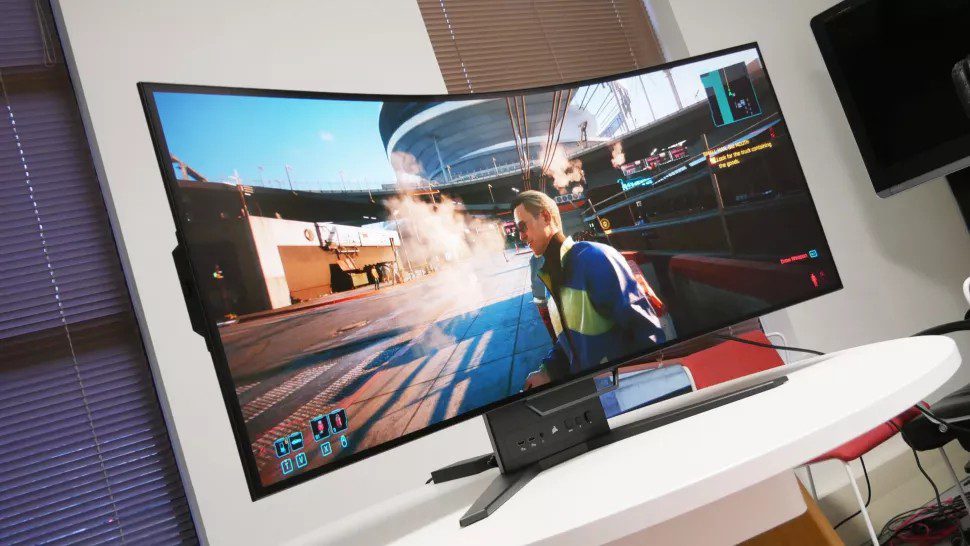
FOR
- Ultra-fast response time
- Pretty much perfect black levels
- Good connectivity
AGAINST
- Disappointing full-screen brightness
- Feels fragile when flexing
- Relatively low resolution
- A 42-inch 4K OLED gaming TV is half the price
Why you can trust PC Gamer Our expert reviewers spend hours testing and comparing products and services so you can choose the best for you. Find out more about how we test.
OLED screen tech promises so much. But so far, it has delivered painfully little on the desktop for PC gamers. The only true OLED PC gaming monitor—as opposed to a thinly-disguised TV—we’ve so far seen is the excellent 34-inch Alienware 34 AW3423DW(opens in new tab). Until now, that is, and the arrival of the new Corsair Xeneon Flex 45WQHD240.
Strictly speaking, you can debate whether the new Xeneon Flex is pure monitor tech, given its 45-inch ultrawide panel is derived from LG’s latest TVs, right down to its WRGB rather than RGB sub-pixel structure. The relatively lowly 3,440 by 1,440 native resolution and 84PPI pixel density likewise belie the TV origins of the panel tech. But this is much more than mere a reboxed TV with added DisplayPort connectivity. There’s some genuinely intriguing engineering going on here.
For starters, and as the Xeneon Flex branding implies, this OLED isn’t just curved, it actually bends. You can manually set the amount of curve anywhere from completely flat through to a very tight 800R curve. For comparison, the ultra-curvy Samsung Neo G9(opens in new tab) sports an only slightly less intense 1000R curve. So set to maximum curve, this Corsair monitor is pretty extreme.
Perhaps unsurprisingly, given the complexity added by the flexible panel, other physical adjustments are limited. Only tilt is provided, with no height or swivel available. As for broader specifications, Corsair rates the LG-supplied OLED panel at 1000 nits peak brightness and 150 nits full screen—plus 450 nits in a 25% window and 800 nits in a 10% window.
As those complicated specs imply, the basic question of brightness is a bit of a minefield with OLED tech. As we explained recently(opens in new tab), OLED panels have no problems cranking up the brightness in small windows or over a limited proportion of the overall panel. But larger objects or full-screen brightness is a real challenge in terms of power consumption, heat, and the risk of burn in. Which is why the full-screen brightness ratings of OLED screens are typically a small fraction of their peak capabilities.
Anyway, where the Corsair Xeneon Flex 45WQHD240 definitely delivers is speed. The panel is rated at 0.03ms for GtG pixel response and 0.01 for full on-off response, which is miles better than any LCD monitor, and the refresh rate peaks at 240Hz. The latter, surely, is plenty for all but semi-pro esports addicts.
Like all OLED panels, which benefit from per-pixel lighting and essentially perfect black levels, the Xeneon Flex promises exceptional contrast and HDR performance. Indeed, OLED technology is fundamentally different to LCD when it comes to HDR rendering, to the extent that Corsair says it is working with Blur Busters and LG to create a brand-new OLED Gaming Monitor certification standard to rate HDR performance.
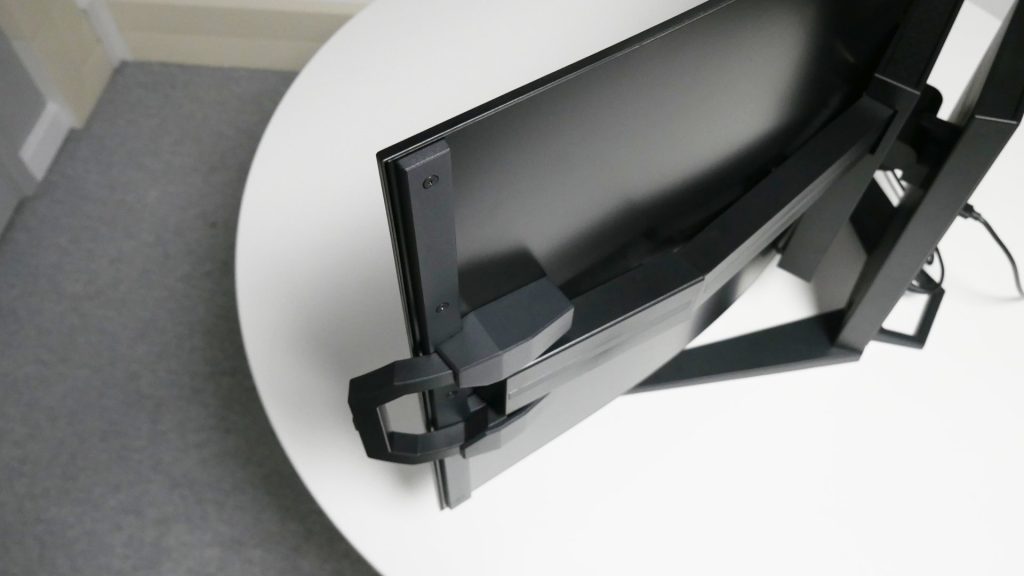
Of course, with any OLED panel burn-in is always a worry and here Corsair is very reassuring. The panel has several mitigation technologies, including a full-panel resolution of 3,456 by 1,456 pixels, allowing the panel to shift the image slightly. Corsair backs it all with a three-year Zero Burn in and Zero Dead Pixel Warranty.
Finally in terms of the main speeds and feeds, the Xeneon Flex sports excellent connectivity. Along with dual HDMI 2.1 ports, you also get DisplayPort and USB Type-C with 90W power delivery, plus four USB Type-A sockets, two on the rear and two on the front of the stand.
But is it actually any good? Increasingly, the big question mark over any OLED panel implemented in a desktop gaming monitor involves brightness. Here, the Xeneon Flex is a very mixed performer. It all depends on the kind of content being displayed.
In simple terms, the brighter the content, the worse the Xeneon Flex does. Subjectively, the full-screen brightness is poor. Brightly-lit outdoor gaming scenes look pretty dull, whether running in HDR or SDR mode. Given the ultra-enthusiast price point of this panel, that’s disappointing.
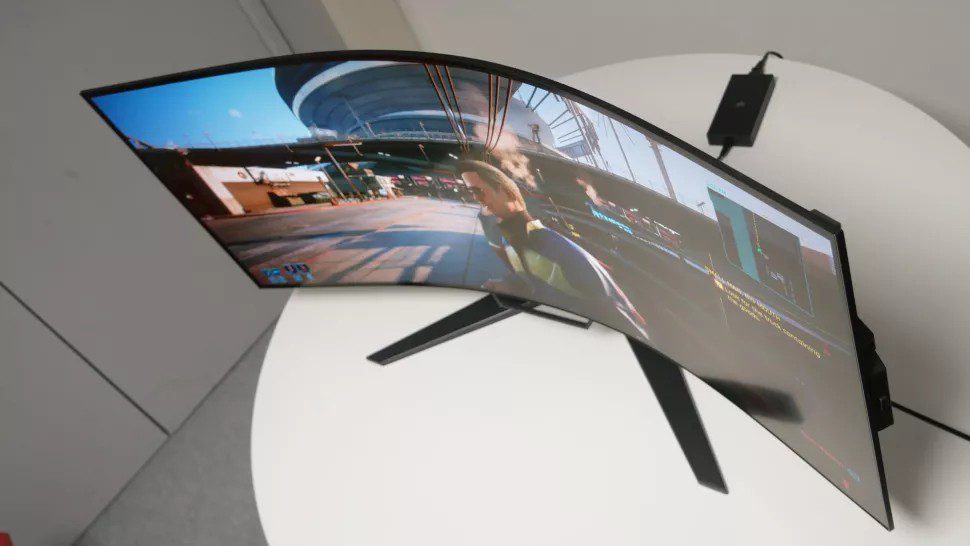
With content featuring dark backgrounds punctuated by small, bright objects, the OLED panel is much more able to achieve something closer to the full 1,000 nit peak claim. Combine that with the perfect black levels—and also a lack of any blooming—the results can be pretty gorgeous.
A great example is the moody bar scene in Cyberpunk 2077, where the neon signs behind the bar do pop against the dark interior. The one catch is that, even in this context, the centre of the panel is noticeably, although not dramatically, brighter than at the sides.
Then there’s the question of pixel density. 3,440 by 1,440 is an awfully low resolution for a 45-inch panel. That’s especially true when the panel has WRGB rather than RGB pixels, the latter being required for sub-pixel font smoothing to work properly. Admittedly, text doesn’t look as bad as I might have expected. And for shooters, racing sims and what you might call console-style gaming, the pixel density is OK.
But if you spent $2,000 to play strategy games on this thing, you’d be making a big mistake. As a multi-purpose tool for both gaming and other PC work, the pixel density just doesn’t cut it.
As I said, where the Corsair Xeneon Flex 45WQHD240 definitely delivers is speed. That OLED pixel response combined with 240Hz refresh is a definite step up on any LCD monitor. This thing is seriously zippy.
Back on the Windows desktop, however, the brightness limitations are hard to overlook. The panel simply lacks punch and zing. Most large format OLED screens run ABL or automatic brightness limiter algorithms that adjust brightness according to how much of the panel is being driven hard. The Corsair’s ABL is certainly quite aggressive, perhaps because the panel lacks a heatsink.
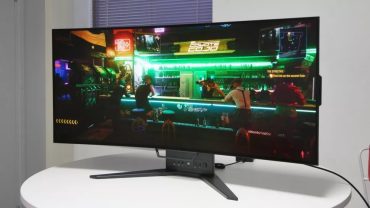
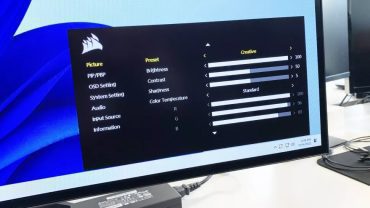

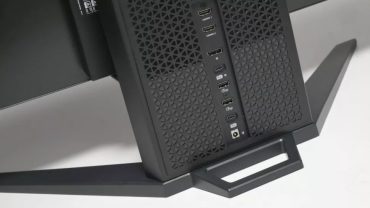
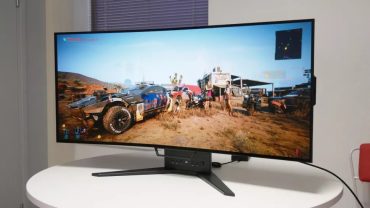
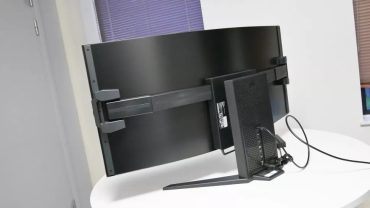
That’s an important omission given heatsinks are increasingly being used to allow the latest OLED TVs to achieve better large-object and full-screen brightness. Looking at the way the flexible panel feature is engineered, it’s hard to see how that could be combined with a heatsink. If it’s correct that the flexible panel prevents the use of a panel heatsink, we’d far rather have a flat panel or a fixed curve and a heatsink enabling more overall panel brightness.
That’s particularly true given the flex feature feels clunky and fragile. As you adjust the curve, it’s difficult to know how far to bend the panel. In theory, the supporting adjustment arm is meant to click at full bend. In practice, it tends to click at random moments. Anyone with mechanical sympathy will also find all the creaking, cracking and clicking unnerving.
All told, the Corsair Xeneon Flex 45WQHD240 is a very mixed performer. At this price point, the relatively lowly resolution and pixel density alone are pretty difficult to stomach. So, the rest of the experience needs to be exceptional. Unfortunately, it isn’t.
The full screen brightness is poor in absolute terms and also inconsistent across the panel. Meanwhile, the adjustable panel curve doesn’t add a great deal to the experience, while possibly limiting the brightness available to at least some extent by precluding the use of a heatsink.
More than anything, the Corsair Xeneon Flex 45WQHD240 is a reminder of just how problematic HDR remains on the PC. While OLED panels offer incredible black levels, full screen brightness on larger panels like this remains a major limitation. Mini-LED monitors, of course, have their own set of issues and thus far very, very few monitors can do both the peaks and the lows in terms of brightness, while controlling everything with precision. The Xeneon Flex, unfortunately, doesn’t buck that trend.
